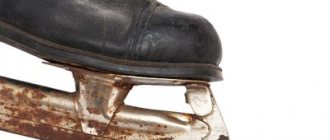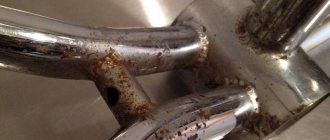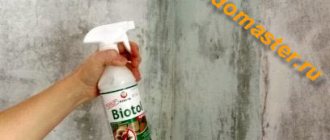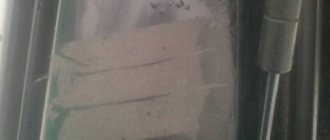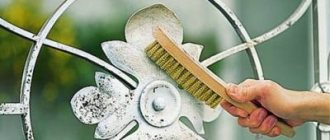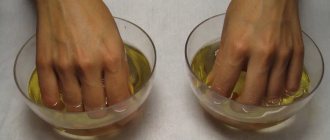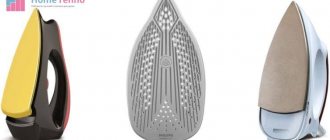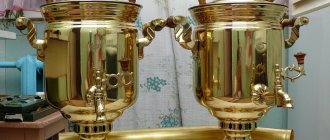Plumbing fixtures, wheel rims and other chrome-plated products are cleaned with home remedies or special pastes designed to combat metal oxides.
To achieve the desired effect and not damage the coating, you must follow the instructions and remember the important nuances of cleaning.
In this article we will tell you how you can remove rust from chrome surfaces without damaging them.
Traditional recipes for use at home
Available solutions and materials that are found in almost any home can help remove rust stains quickly and efficiently. These products do not require large financial expenditures, and their use is safe for human health and the item itself.
To speed up and facilitate the removal of rusty deposits, before using any recipe, the damaged surface must be cleaned of dirt and dust with a detergent and rinsed with water.
Vinegar
Used as a reagent:
- dining room,
- wine,
- low concentration apple cider vinegar (6-9%).
It is not recommended to use concentrated vinegar essence for work due to its excessive aggressiveness.
Acetic acid is poured into a container and the rusty part is placed in it . If the size of the product does not allow using this method, wipe the damaged area with a cloth soaked in vinegar and cover the surface with it.
For protruding parts of an object (for example, a faucet spout), it is convenient to use a different technique. Vinegar is poured into a plastic bag and tied so that the rusty area is immersed in the reagent.
The exposure time in the vinegar solution depends on the amount of rust.
The thicker the layer, the more time is allowed for the reaction .
On average it ranges from three to eight hours. After removing the vinegar application, the product is thoroughly wiped with a sponge, removing any remaining plaque and washed. Work with vinegar should be carried out with open windows and ventilation turned on, since the vapors of this substance irritate the human respiratory tract.
How to clean with citric acid?
The action of this reagent is similar to vinegar . Citric acid or products containing it (natural lemon juice) help remove rust easily and effectively.
The acid reacts with metal oxides and hydroxides, converting them into salts.
Add a little water to the citric acid powder to make a paste . It is applied in a thick layer to the rusty areas and left for several hours. After this, wipe the surface with a soft cloth.
If the rust layer was thick and rusty traces remained after treatment, repeat the cleaning procedure.
Coca Cola
Drinks containing organic acids (orthophosphoric, citric) are also suitable for removing rusty deposits. Instead of Coca-Cola, you can use analogues:
- Fanta,
- Pepsi,
- Sprite.
The method is considered effective, simple and safe.
The method of using Coca-Cola depends on the area and location of the rust. Small items are dipped into a container filled with a drink. Leave for several hours and then rinse under running water.
Fixed parts are covered with a napkin heavily soaked in Coca-Cola . It is also possible to receive it with a plastic bag, which is used as a hanging container.
The exposure time in the cleaning liquid depends on the thickness of the rusty deposit. With a minimum layer, 2-3 hours is enough. For deeper damage, it is necessary to extend the exposure time to 5-8 hours.
During cleaning, you should not allow the napkin applied to the surface to dry out, as this will delay the process and will not allow you to achieve the effect. Read more about removing rust with Coca-Cola here.
Aluminium foil
This method allows you to effectively clean products from oxides. Foil is a soft material, so it is gentle on the hard chrome plating, without scratching it and at the same time removing rust particles.
To work, cut several small pieces of aluminum foil . It is enough to cut strips of 7-10 cm from the roll.
The damaged surface is moistened with water. Make a voluminous ball from foil and rub it on the rusty area without strong pressure until it shines.
If necessary, take a new strip of foil, re-wet the product with water and repeat cleaning . After completing the procedure, wash off the brown mass from the coating and wash the chrome surface with water.
How to remove with toothpaste?
To combat rust, use regular tooth powder or paste. These products have a mild abrasive effect and delicately remove rusty deposits, so it is quite possible to achieve a positive result.
However, using toothpaste requires some physical effort, since cleansing is achieved through mechanical action.
Apply a small amount of toothpaste or powder to a flannel cloth or foam sponge . In the latter case, the sponge is first slightly moistened with water. Rub the area with rust until the rust stain disappears.
If necessary, during the cleaning process, add a new portion of the product and continue cleaning. After the procedure, the dry residue is removed with a brush or napkin. The product is washed and wiped dry.
Paste GOI
This budget product, developed by Soviet scientists, includes chromium oxide, solvents, sorbents, silica gel, which is an excellent desiccant, kerosene, stearin, and bicarbonate of soda. When purchasing GOI paste, you should pay attention to the percentage of chromium oxide. The higher it is, the greater the graininess. You should choose the softest paste No. 1-3 with a chromium oxide content of 60-70%.
Before processing, the chrome part must be coated with industrial oil. The product is applied to a cloth slightly moistened with purified gasoline. After wiping, the surface is washed with soap, then with clean water and wiped dry.
Special products for cleaning chrome parts
When choosing a chemical intended for rust removal, you must carefully read the accompanying information .
The liquid or paste must be approved for use on chrome plating.
It also matters:
- expiration date of the product,
- its cost,
- Ease of use,
- harmless to human health.
WD-40
The drug was developed by an American company of the same name. WD-40 is an aerosol used in everyday life and in auto repair shops.
The product is versatile and can be used to remove marks:
- corrosion,
- glue,
- fat,
- bitumen,
- soot,
- mud.
WD-40 does not leave oily or sticky stains and forms a water-repellent layer on the surface of parts.
The product includes:
- White Spirit,
- carbon dioxide,
- mineral oil,
- inert additives.
To clean rust, the product is sprayed onto the surface to be cleaned, left for a short time and wiped with a napkin. A 200 ml bottle can be bought for 200-300 rubles.
Doctor Wax
The product from a well-known American brand is available in the form of a polishing paste . It is suitable for cleaning not only chrome surfaces, but also coatings made of:
- bronze,
- aluminum,
- gold,
- silver,
- become.
There are no abrasive or aggressive substances in the composition; the polishing properties are based on vegetable wax. Polish removes scratches and traces of rust. It is in demand in workshops and at home.
Doctor Wax is applied to surfaces with rust. After some time, when the paste dries and turns into a matte coating, the coating is polished with a soft cloth. The cost of a can weighing 0.18 kg is on average 350 rubles. A 300 ml bottle is estimated at 380-400 rubles.
Metal Polish
The polish was developed by the German company Autosol. The product has a creamy consistency. Metal Polish is used for cleaning and polishing:
- dishes,
- plumbers,
- car body,
- industrial equipment.
May be used for:
- chromium,
- brass,
- copper,
- nickel,
- become.
To clean the surface, Metal Polish paste is applied to the area with rust and, using a cloth, polished in a circular motion until shiny. Then remove any remaining product and wipe the coating with a clean cloth.
The average price for a tube of paste with a volume of 0.75 ml is 450 rubles, a large jar with a volume of 0.75 liters costs from 2,700 rubles (all prices are here).
In order to efficiently remove rust stains from chrome plating, you must follow the instructions and follow the safety rules noted.
Covering a chrome surface with vinyl film
We have noted more than once that cleaning rust on chrome parts is a risky procedure. A layer that is too thin will not allow you to get rid of large scratches, and if the corrosion has spread deep enough, it cannot be removed without exposing the layer of the substrate (base metal). In this case, restoring chrome car parts with your own hands using conventional cleaning products and polishes will not be possible. But you shouldn’t despair - there is an alternative method: gluing the surface with vinyl film. It is advisable to use a film with a chrome texture, although this is not necessary.
The film application procedure is not that complicated, but it is specific and requires precision and accuracy. Note that the method is not always applicable, since it requires removal of the part. If possible, completely remove the chrome layer, clean/polish the metal, and degrease it with white spirit diluted with water. We apply the vinyl film to the workpiece without removing the backing for now. Mark the edges, trim off the excess, leaving a small margin. It will be difficult to complete the subsequent steps without an assistant.
Apply a layer of soap solution to the entire surface of the part, trying not to make gaps and achieving uniform coverage. Remove the backing from the adhesive side and gently press it onto the part along its entire length. We heat the film with a hairdryer (to a temperature not exceeding 200°C, without staying in one place for more than 10 seconds, otherwise the film will lose its shine) and begin to press the film with a rubber squeegee, starting from the middle and moving to the edges, first in one side, then the other. If the part is not flat, you need to press the squeegee so that it follows the contours of the surface. Make sure there are no air bubbles or folds. We wipe the pasted surface with a damp cloth and let it dry.
Of course, this method of protecting chrome parts on a car cannot be called ideal, and the film itself is not so strong, so the durability of the restored coating will obviously be lower.
What can't be used and why?
The shiny chrome finish is sensitive to many aggressive and rough products. Therefore, when choosing a suitable method, it is worth keeping in mind unwanted cleansers.
The list includes:
- Steel wool . It spoils the gloss of the chrome finish and makes it dull.
- Metal scourers . Such sponges can remove rust, but leave marks on the coating.
- Strong acids . Sulfuric, hydrochloric and other acids destroy the protective coating.
Getting rid of rust from chrome car parts
Chrome parts are in demand among car enthusiasts - they make the car shine and make it stand out in traffic. Chrome is an expensive material that corrodes, like other modern metals. It is characterized by consistent tarnishing and brittleness, and chrome parts must be carefully maintained.
Expensive cleaning products are not financially accessible to everyone, and cheap, low-quality analogues contain aggressive chemicals that accelerate the destruction of the material. This article will discuss the process of answering the question “how to remove rust from a chrome part” using available tools.
Recommendations
In order to be 100% satisfied with the result of the work, you must follow the instructions included with each product and remember the additional recommendations:
Before applying a reagent or using mechanical cleaning from a chrome-plated product, it is recommended to wash off the dirt to facilitate contact with rust.- The soak time in the cleanser should be adjusted depending on the extent of the damage. Areas with a thicker layer of rust require a longer treatment period.
- After cleaning, the product must be wiped with a dry cloth. It is not advisable to leave the coating to dry naturally, as unsightly water stains will remain on the glossy surface.
- For additional polishing of chrome, it is useful to use oily substances. Vegetable oils and wax polishes are suitable. They are dripped onto a microfiber cloth and rubbed until the surface shines.
Causes of rusty plaque
The main cause of corrosion on the surface of chrome-plated products is excessive force and mechanical loads. They lead to the appearance of small scratches and cracking of the surface layer of the material. This happens as follows: the metal is covered with chromium, it oxidizes due to the negative influence of oxygen and other organic substances. This is how rust appears.
It is also worth noting that metal household appliances are constantly exposed to the aggressive effects of chemical reagents (soap suds, detergents, dust formations, mold). The feeling of cleanliness and comfort is lost - the coating becomes cloudy and loses its original natural shine.
Prevention
Thorough cleaning and purchasing high-quality faucets are suitable as preventive measures against rust. Taps must be cleaned regularly with special products and stains must be removed at the first signs of rust. Over time, when they corrode the surface, it will be almost impossible to deal with them.
It’s better not to skimp on taps, since inexpensive options quickly become unusable and also force you to spend a lot of money on household chemicals to clean them.
It is a good idea to periodically wipe the taps dry to prevent moisture from accumulating around them.
Rust is a big problem for any housewife who is used to keeping her apartment clean, but you can fight it. There are many products that can completely rid the faucet of rusty stains, but it is better to prevent these stains in order to save your time and the beauty of the faucets.
Household chemicals in the fight against water stone
The easiest way to get rid of water scale and soap deposits is to resort to modern household chemicals. But when using such potent and aggressive products, the following facts must be taken into account:
- Clean plumbing fixtures only with chemicals that are approved for use on the specific material.
- Metal taps and mixers coated with decorative enamel (made from unusual materials) can easily be damaged by using aggressive cleaning agents.
- Never use cleaning powders or bleaches intended for cleaning the bathroom, sink or washbasin.
- Most taps are treated with chromium, which reacts very strongly to acids. The metal begins to turn black, scorched spots appear on it, which will be impossible to remove.
Carefully study the composition of cleaning products. They should not contain sulfuric, phosphoric and hydrochloric acids, as well as chlorine.
Cleaning plumbing fixtures
In addition to cleaning chrome taps, other plumbing fixtures also require cleaning: shower heads, darkened areas of appliances, as well as buttons on the toilet, cabinet fittings.
For cleaning, improvised means are also used, and if they fail, household chemicals come to the rescue.
Cleaning the shower head
It is important to clear clogged holes in the shower head in a timely manner, before they are completely covered with lime flakes. To do this, try to disassemble the shower head. Soak the parts that were removed from the structure for 2 hours in a heated vinegar solution. After this, rinse them with water to remove the odor.
The hydromassage nozzle itself must be cleaned using a needle. It is also recommended to use some chemical compounds and clean the injectors with a toothbrush.
Recipe for cleaning darkened plumbing fixtures
Unfortunately, it is often impossible to restore damaged chrome plating. However, there is a tool that helps hide cleaning mistakes. For this purpose, a special composition is used for polishing metal parts of a car, including Goi paste. You can purchase such substances at any auto store, having previously consulted on this issue.
Another method of bringing chrome coatings to a shine is the use of car wax shampoos. They create a water-repellent film on the coating and protect the material from corrosion.
Don’t forget about timely cleaning of chrome taps, and then you won’t have to think about finding suitable products.
How to clean faucets: cleaning products
- For frequent cleaning, we offer Clean (250 ml), which easily cleans even the most stubborn and long-standing stains.
- Care liquid (250 ml) gently cleans the surface, covering it with a water-repellent layer for additional protection against water.
- The products are applied to the faucets using soft Shine wipes that do not scratch the chrome finish.
Many world-famous companies engaged in the production of sanitary ware simultaneously develop and offer care products for their products.
Do you believe in the benefits of visiting cosmetologists?
Not really
Stuck faucet: how to get out of the situation?
When the faucet or mixer switching the water to the shower is not used for a long time, it may jam. The cause of such a breakdown is often a deposit of water stone, which can be dealt with as follows:
- Clean the faucet using one of the above remedies or traditional methods.
- If this method is not suitable, let's turn to another. Take vinegar and dilute it with hot water. Dip the prepared rag into the solution so that it absorbs the product. Wrap a cloth around the jammed faucet, then wrap it in cling film. This is done so that the vinegar does not evaporate, but saturates the plaque deposits well and removes it.
- Another method that any housewife can handle is the use of universal WD-40. It can be used to fix many problems, and a stuck faucet is no exception. Spray the joint between the tap and the mixer with the product and wait a while. The substance can be purchased at any hardware or automotive store.
If the proposed methods do not help open the tap, you will have to call a plumber. In the future, to prevent such situations, promptly clean the gaps in the taps.
Procedure
The extent of the damage is very difficult to assess if the chrome part is not cleaned of dirt. This must be done very carefully, since the chrome film is very thin. When performing cleaning, the following rules must be observed:
First, rinse the part with warm water and then wipe with gasoline. You may need to repeat this procedure several times.
If dirty plaque remains in some hard-to-reach places, it can be removed from there with an old soft-bristle toothbrush.
To prevent corrosion from harming neighboring areas of chromium, the source of damage must be localized. This can be done using regular wax or polish.
A little bit of science
First, let's study a little what a chrome surface is. In our minds we are always talking about a shiny and mirror structure. Visually everything is correct, but from the point of view of galvanoplasty everything is much more complicated. Chromium itself is not used in its pure form; in the process of applying it to the surface of products, its compounds (solutions) are used. Moreover, chrome plating is carried out on the so-called sublayer, which can be a thin film of copper or nickel. Thus, the resistance of such a surface to destruction is significantly increased. The components of almost all high-quality faucets are presented as follows: the base is brass, the sublayer is nickel and the top is chrome.
On cheap products made from silumin, galvanic application of chromium is difficult to implement, so special varnishes are widely used. This product has nothing in common with real chrome plating, which can be distinguished by its cool blue tint.
In general, when choosing a faucet for a bathroom or kitchen, focus on the weight of the device and the shade of its surface.
